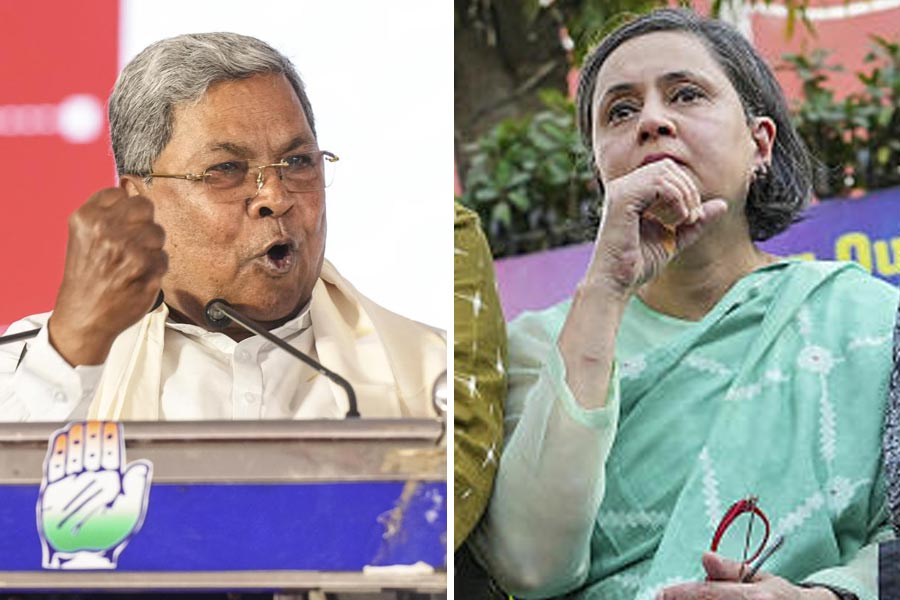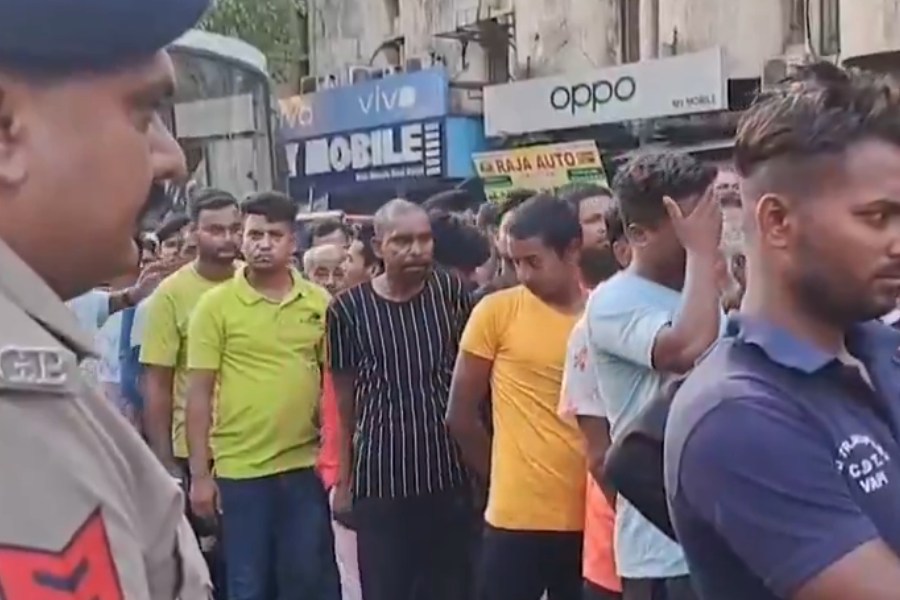 |
| Census officials question a pavement dweller on Harish Mukherjee Road on Monday night. (Anindya Shankar Ray) |
The city residents whom most Calcuttans prefer not to look at were woken up on Monday night by government officials, not to be evicted but counted.
On what was officially the last day of the census in the city, enumerators worked through the night to count the homeless — from the pavements to the flyovers, the concrete pipes to the shacks.
Rashmoni Ranjit, 80, Shibu Shaw, 65, Sandhya Debi, 45, Bholanath Sardar, 63, and Ram Mondal, 28, had turned in for the night on a Harish Mukherjee Road pavement by the time the officials came calling in Bhowanipore.
The octogenarian shuddered when a stranger called out to her: “Mashi, otho (Get up, aunt).” Still under a blanket, she stole a glance at the half a dozen strangers, including policemen, surrounding them and shook her son awake.
Rubbing his eyes, Sudarshan, 51, sat up on the makeshift bed made out of flattened cardboard cartons.
Before he could make out who the visitors were, came the questions. “What’s your name? How long are you staying here on the pavement? Where do you hail from? Why are you staying on the pavement?”
Clueless, Rashmoni asked “Why? What has happened?”, the fear of being evicted from the street corner evident in her quivering voice.
For the two, who have been living opposite Balwant Singh’s Dhaba for the past seven years, were desperate not to lose their toehold for the second time.
“We had a home and some land in Sandeshkhali. Everything was swept away by the river one monsoon. All 16 members of our joint family moved to Calcutta,” said Rashmoni. Her son works as a construction labourer in the city.
“Our relatives stay on the pavements in Kalighat,” she said.
The men asking the questions comprised one of the teams that the 8,000-plus census personnel had split into to count the homeless.
“Around 13,000 people were counted in the Entally, Park Circus and New Market areas. We found around 15,000 people near Armenian Ghat, off Howrah bridge,” said a census supervisor.
From a patch of land near Ballygunge station to the bylanes of College Street, the homeless were everywhere. In Cossipore, they were found sleeping in unused concrete pipes.
However, not everyone sleeping on the pavement was homeless.
“Strike off their names. They have a house inside the lane,” said one of the enumerators, pointing to a woman and her two sons, who were sleeping on Gokhale Road.
The trio had chosen to be under the open skies because their single-room is too small for the 11 members of their family to sleep in.
Apprehension, excitement, hope, indifference — the enumerators came face to face with many emotions through the night.
“Most were taken aback but the homeless can only be counted at night,” said an enumerator in ward 71.
At many places, fear quickly turned into expectation when the purpose of the questions was explained. “Will the government arrange a shelter for us?” a homeless woman asked an enumerator.
Shibu Shaw, who lives with grandson Vicky and acquaintance Locky on the same pavement as Rashmoni and Sudarshan, said: “I own a pan shop nearby. Earlier, I had a shelter but now it is being demolished to erect a new building.” Locky said he owned a mobile phone.
The quality of the makeshift beds revealed the difference between those living on the pavement out of choice and those who had no other option.
While Rashmoni and her son had just one thin piece of cloth spread over the cardboards that served as their bed, their immediate “neighbours”, Sandhya Debi and her husband who jointly earn Rs 3,000 a month, had a mattress laid on flattened cartons.
Further down the pavement, Ranjit Singh slept on a wooden bed, on one side of which he had kept his clothes in a bag.
“It seems the number of homeless people in the city will cross 1 lakh. We counted 65,000 on Monday night and Tuesday morning. Government Railway Police (GRP) officers will count the homeless people living in and around Sealdah station,” said a census supervisor.
In the 2001 census, 45,000 homeless people had been counted in the city.










